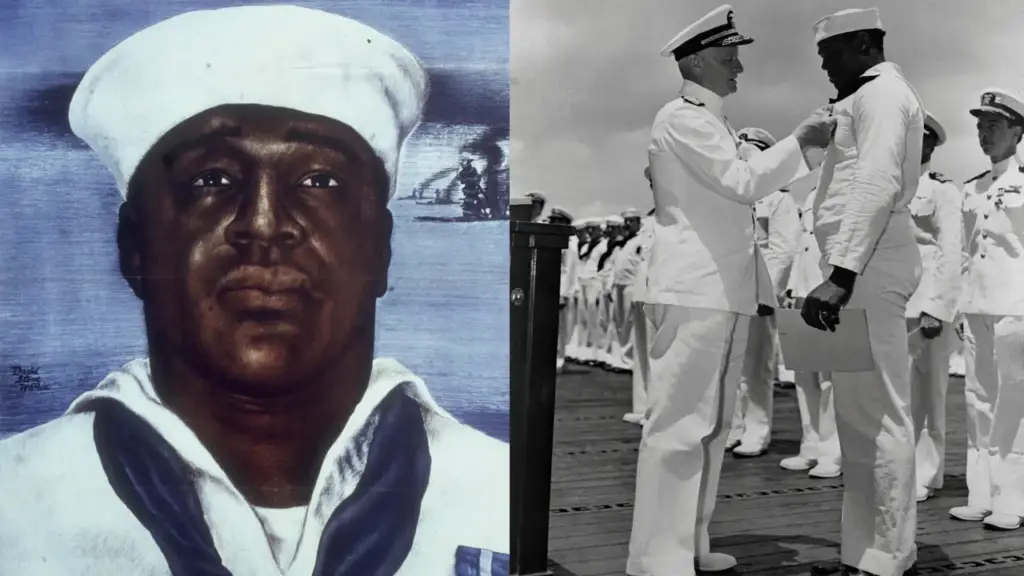Pearl Harbor: The Turning Point of World War II
On December 7, 1941, the United States suffered a devastating attack on its naval base at Pearl Harbor, Hawaii. The surprise attack by the Japanese resulted in the deaths of over 2,400 Americans and the destruction of numerous battleships, aircraft, and other military assets. This attack is widely regarded as one of the most significant events of World War II and a turning point in American history.
The Attack on Pearl Harbor
At the time of the attack, tensions between the United States and Japan had been escalating for years. Japan, seeking to expand its territory and resources, invaded China in 1937 and had been met with resistance from the United States in the form of economic sanctions and military aid to China. The Japanese government believed that a surprise attack on the U.S. Pacific Fleet at Pearl Harbor would cripple American naval power and prevent the United States from interfering with Japan’s plans for expansion in Southeast Asia.

Heavy black smoke rising from ships and waterfront buildings in Pearl Harbour (Pearl Harbor), Oahu Island after a surprise bombing raid by the Japanese which brought America into WW II. Original Artwork: Drawing by Commander Griffith Bailey Coale, Official U.S. Navy Combat Artist, 1944.
On the morning of December 7, 1941, a force of over 350 Japanese aircraft launched a surprise attack on the U.S. naval base at Pearl Harbor. The attack lasted just over two hours and was aimed at destroying as many American ships and aircraft as possible. The Japanese pilots targeted battleships, including the USS Arizona, which suffered a catastrophic explosion and sank with over 1,100 men aboard. In addition to the ships, the Japanese also attacked the airfields at Pearl Harbor, destroying numerous American aircraft on the ground.
The aftermath of the attack was devastating. Over 2,400 Americans were killed, and more than 1,000 were wounded. The episode also destroyed or damaged 20 American naval vessels and over 300 aircraft. The United States declared war on Japan the following day, officially entering World War II.
Doris Miller: A Hero in the Face of Adversity
One of the most memorable figures from the attack on Pearl Harbor was Doris Miller, a young African American sailor who was serving aboard the USS West Virginia. Despite facing discrimination and limited opportunities for advancement in the Navy, Miller rose to the occasion during the attack and became a hero to his fellow sailors and the American public.

During the attack, Miller was assigned to his usual duties as a mess attendant, responsible for serving food and cleaning up after officers. When the ship attacked, Miller was ordered to carry wounded sailors to safety and then man a machine gun on the deck. Despite having no training as a gunner, Miller fired the weapon at the attacking planes with great effectiveness, downing several Japanese aircraft and earning the admiration of his fellow sailors.

Miller’s actions were widely praised in the American media, and he became the first African American to receive the Navy Cross, one of the highest military honors in the United States. His heroism helped to break down racial barriers in the military and inspired a generation of African American servicemen.
The Legacy of Pearl Harbor
The attack on Pearl Harbor had far-reaching consequences for the United States and the world. In the immediate aftermath of the attack, the United States entered World War II with a renewed sense of purpose and determination. The country mobilized its resources for war production and quickly began to turn the tide against the Axis powers.
The attack on Pearl Harbor also had a lasting impact on American foreign policy. The United States became more involved in global affairs, recognizing the need for a strong military presence to deter aggression and protect American interests around the world. The attack also led to the internment of over 100,000 Japanese Americans.
In conclusion,
The attack on Pearl Harbor was a tragic event that forever changed the course of history. The bravery and heroism of individuals like Doris Miller remind us of the sacrifices made by so many during that fateful day. The legacy of Pearl Harbor is felt to this day, as the United States continues to navigate its role in global affairs and confront the challenges of discrimination and prejudice.
Some more Detailed Images from Pearl Harbor 1941
Cabinet members watch with mixed emotions as President Franklin D. Roosevelt, wearing a black armband, signs the United States’ declaration of war against Japan at 4:10 p.m. Washington time on December 8, 1941.

Explosions were seen from Hickam Field during the Japanese attack on Pearl Harbor.

Two servicemen sit on the wreckage of a bomber, surrounded by dirt and sandbags, on Hickam Field after the Japanese attack on Pearl Harbor, Honolulu, Hawaii.

The results of the Pearl Harbour (Pearl Harbor) attack by the Japanese at Wheeler Field Barracks with artillery being pulled from the water.

Attack on Pearl Harbor by the Imperial Japanese Navy on December 7, 1941 Group picture of Japanese bomber pilots – December 1941.

Wreckage of a Japanese plane shot down during the attack on Pearl Harbour, World War two.

These headlines were from a New York newspaper telling of the start of the American-Japanese war, on December 7, 1941.

These headlines were from a New York newspaper telling of the start of the American-Japanese war, on December 7, 1941.

Women firefighters during a training exercise at the Pearl Harbor Naval Shipyard, during World War II, circa 1941. From left to right, they are Elizabeth Moku, Alice Cho, Katherine Lowe, and Hilda Van Gieson.


Pingback: The Triumph of Love over War: A Visual Journey through Time